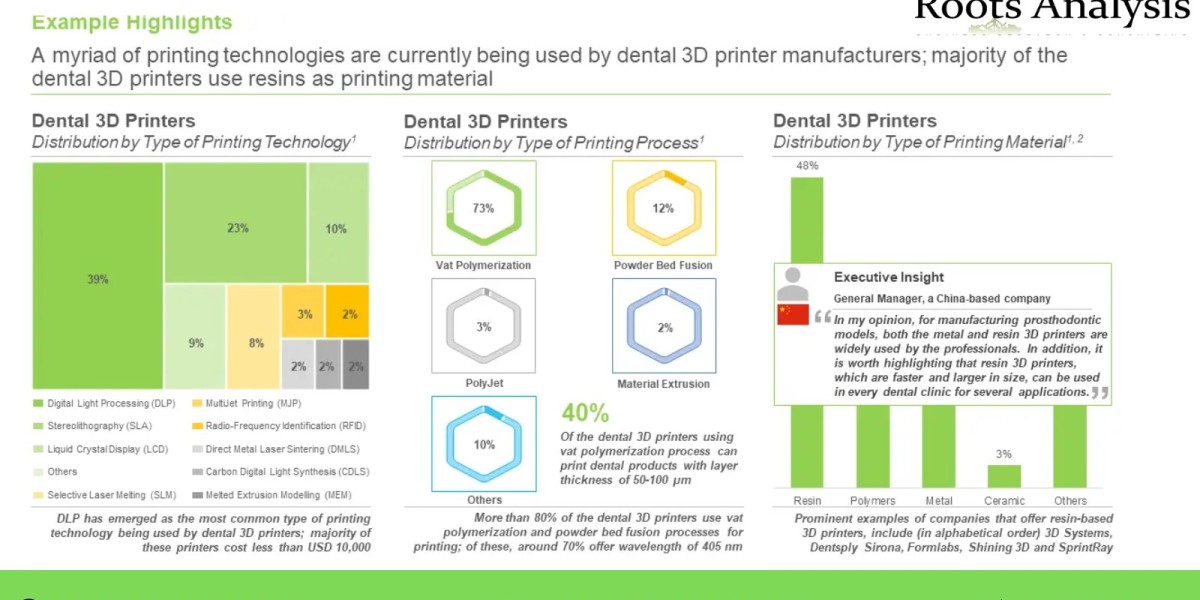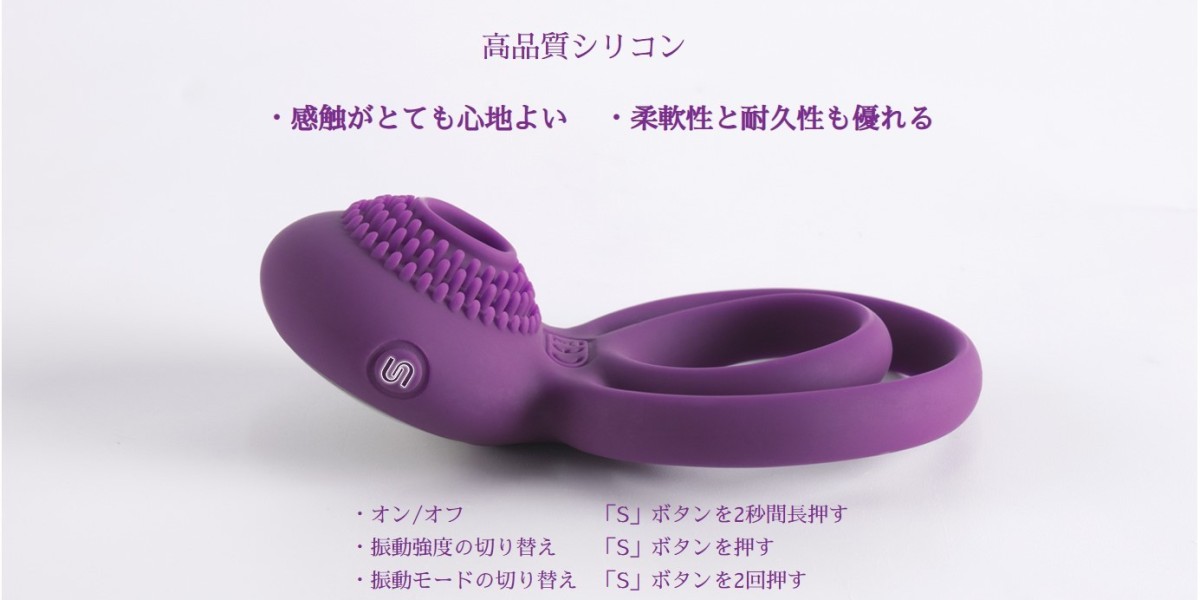Key Market Insights
Presently, around 230 dental 3D printers are available for use across wide range of dental applications; majority of these devices print crowns, bridges, dentures and working models
A myriad of printing technologies are currently being used by dental 3D printer manufacturers; majority of the dental 3D printers use resins as printing material
The current market landscape is highly fragmented, featuring the presence of both new entrants and established players across key geographical regions; majority of these players are based in Europe and Asia-Pacific
In pursuit of gaining a competitive edge, developers are making an active effort to incorporate advanced technologies into their respective portfolios of dental 3D printers and comply with evolving industry needs
The growing interest of stakeholders is also evident from the rise in partnership activity; in fact, majority of the intracontinental agreements were signed by companies based in North America
The rising interest of various stakeholders in dental 3D printing and associated technologies has led to an increase in research, and subsequently, the expansion of intellectual capital in this domain
Cost is a key determinant of the acceptance and adoption of 3D printers in the dental industry; pricing strategy matrix is likely to assist players in evaluating the competitive market prices for their offerings
The dental 3D printing market is expected to grow at a CAGR of 14.2% till 2035; the projected opportunity is likely to be well distributed across various market segments
Table of Contents
1. PREFACE
1.1. Scope of the Report
1.2. Market Segmentation
1.3. Research Methodology
1.4. Key Questions Answered
1.5. Chapter Outlines
2. EXECUTIVE SUMMARY
3. INTRODUCTION
3.1. Chapter Overview
3.2. Overview of Dental 3D Printing
3.3. Dental 3D Printing Technologies
3.4. Applications of 3D Printing in Dental Industry
3.5. Advantages and Limitations Associated with Dental 3D Printing
3.6. Future Perspectives
4. MARKET LANDSCAPE
4.1. Chapter Overview
4.2. Dental 3D Printers: Overall Market Landscape
4.2.1. Analysis by Types of Products Printed
4.2.2. Analysis by Application Area
4.2.3. Analysis by Type of Printing Technology
4.2.4. Analysis by Type of Printing Process
4.2.5. Analysis by Type of Printing Material
4.2.6. Analysis by Printer Wavelength
4.2.7. Analysis by Type of Connectivity
4.2.8. Analysis by Printing Speed
4.2.9. Analysis by Layer Thickness of Printed Products
4.2.10. Analysis by Printer Resolution
4.2.11. Analysis by Printer Price
4.3. Dental 3D Printer Manufacturers: Developer Landscape
4.3.1. Analysis by Year of Establishment
4.3.2. Analysis by Company Size
4.3.3. Analysis by Location of Headquarters
4.3.4. Most Active Players: Analysis by Number of Dental 3D Printers
5. PRODUCT COMPETITIVE ANALYSIS
5.1. Chapter Overview
5.2. Assumptions and Key Parameters
5.3. Methodology
5.4. Product Competitiveness Analysis: Dental 3D Printers
6. COMPANY PROFILES
6.1. Chapter Overview
6.2. 3D Systems
6.2.1. Company Overview
6.2.2. Dental 3D Printer Portfolio
6.2.3. Recent Developments and Future Outlook
6.3. Asiga
6.3.1. Company Overview
6.3.2. Dental 3D Printer Portfolio
6.3.3. Recent Developments and Future Outlook
6.4. BEGO
6.4.1. Company Overview
6.4.2. Dental 3D Printer Portfolio
6.4.3. Recent Developments and Future Outlook
6.5. Carbon
6.5.1. Company Overview
6.5.2. Dental 3D Printer Portfolio
6.5.3. Recent Developments and Future Outlook
6.6. Digital Wax Systems (DWS)
6.6.1. Company Overview
6.6.2. Dental 3D Printer Portfolio
6.6.3. Recent Developments and Future Outlook
6.7. Formlabs
6.7.1. Company Overview
6.7.2. Dental 3D Printer Portfolio
6.7.3. Recent Developments and Future Outlook
6.8. Prodways
6.8.1. Company Overview
6.8.2. Dental 3D Printer Portfolio
6.8.3. Recent Developments and Future Outlook
6.9. Rapid Shape
6.9.1. Company Overview
6.9.2. Dental 3D Printer Portfolio
6.9.3. Recent Developments and Future Outlook
6.10. SprintRay
6.10.1. Company Overview
6.10.2. Dental 3D Printer Portfolio
6.10.3. Recent Developments and Future Outlook
6.11. Stratasys
6.11.1. Company Overview
6.11.2. Dental 3D Printer Portfolio
6.11.3. Recent Developments and Future Outlook
7. PARTNERSHIPS AND COLLABORATIONS
7.1. Chapter Overview
7.2. Partnership Models
7.3. Dental 3D Printing: List of Partnerships and Collaborations
7.3.1. Analysis by Year of Partnership
7.3.2. Analysis by Type of Partnership
7.3.3. Analysis by Year and Type of Partnership
7.3.4. Most Active Players: Analysis by Number of Partnerships
7.3.5. Geographical Analysis
7.3.5.1. International and Local Agreements
7.3.5.2. Intercontinental and Intracontinental Agreements
8. PATENT ANALYSIS
8.1. Chapter Overview
8.2. Scope and Methodology
8.3. Dental 3D Printing: Patent Analysis
8.3.1. Analysis by Type of Patent
8.3.2. Analysis by Patent Publication Year
8.3.3. Analysis by Patent Application Year
8.3.4. Analysis by Annual Number of Granted Patents and Patent Applications
8.3.5. Analysis by Geographical Location
8.3.6. Analysis by CPC Symbols
8.3.7. Analysis by Type of Applicant
8.3.8. Analysis by Patent Age
8.3.9. Leading Industry Players: Analysis by Number of Patents
8.3.10. Leading Non-Industry Players: Analysis by Number of Patents
8.3.11. Leading Individual Assignees: Analysis by Number of Patents
8.4. Dental 3D Printing: Patent Benchmarking Analysis
8.4.1. Analysis by Patent Characteristics
8.5. Dental 3D Printing: Patent Valuation
8.6. Leading Patents by Number of Citations
9. BOWMAN CLOCK PRICING
9.1. Chapter Overview
9.2. Bowman Strategy Clock
9.2.1. Two Dimensions of Bowman Strategy Clock
9.2.2. Eight Positions on Bowman Strategy Clock
9.3. Roots Analysis Framework
9.3.1. Scope and Methodology
9.3.2. Theoretical Framework and Price Evaluation Hypothesis
9.3.3. Results and Interpretation
9.3.3.1. Product Price Evaluation Matrix: Information on Types of Products Printed
9.3.3.2. Product Price Evaluation Matrix: Information on Application Area
9.3.3.3. Product Price Evaluation Matrix: Information on Type of Printing Technology
9.3.3.4. Product Price Evaluation Matrix: Information on Type of Printing Process
9.3.3.5. Product Price Evaluation Matrix: Information on Type of Printing Material
9.3.3.6. Product Price Evaluation Matrix: Information on Type of Connectivity
9.3.4. Concluding Remarks
10. MARKET FORECAST AND OPPORTUNITY ANALYSIS
10.1. Chapter Overview
10.2. Forecast Methodology and Key Assumptions
10.3. Global Dental 3D Printing Market, 2023-2035
10.3.1. Dental 3D Printing Market: Distribution by Type of Printing Technology, 2023 and 2035
10.3.1.1. Dental 3D Printing Market for VAT Polymerization Technology, 2023-2035
10.3.1.2. Dental 3D Printing Market for Powder Bed Fusion Technology, 2023-2035
10.3.1.3. Dental 3D Printing Market for Polyjet Technology, 2023-2035
10.3.1.4. Dental 3D Printing Market for Metal Extrusion Technology, 2023-2035
10.3.1.5. Dental 3D Pr








